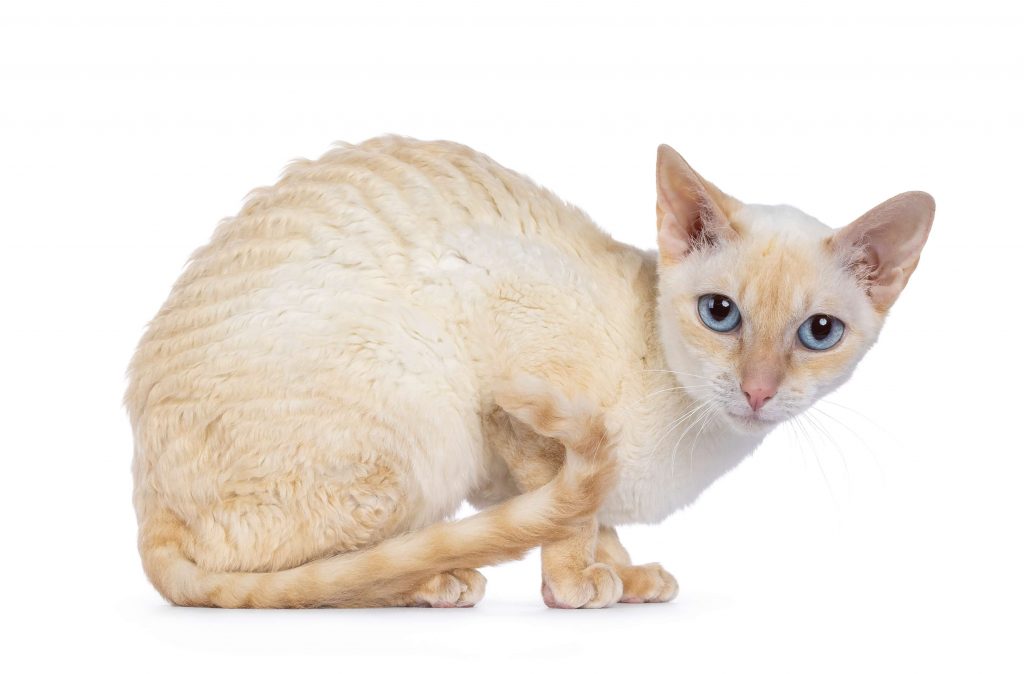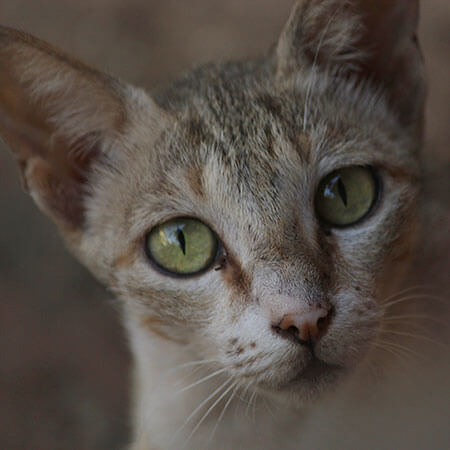History of the German Rex
Representatives of this breed have been called “German Rex” since the 1950s, but the history of these curly-haired cats began much earlier. Felines with wavy fur were relatively rare in Germany, but they did occur from time to time. The German Rex first became known in the 1930s, thanks to an East Prussian tomcat named “Munk”, considered to be the first representative of the breed. A German cat with an English name? German Rex cats didn’t get their name from cat breeders, but from a breeder who bred small mammals in Cornwall, England.
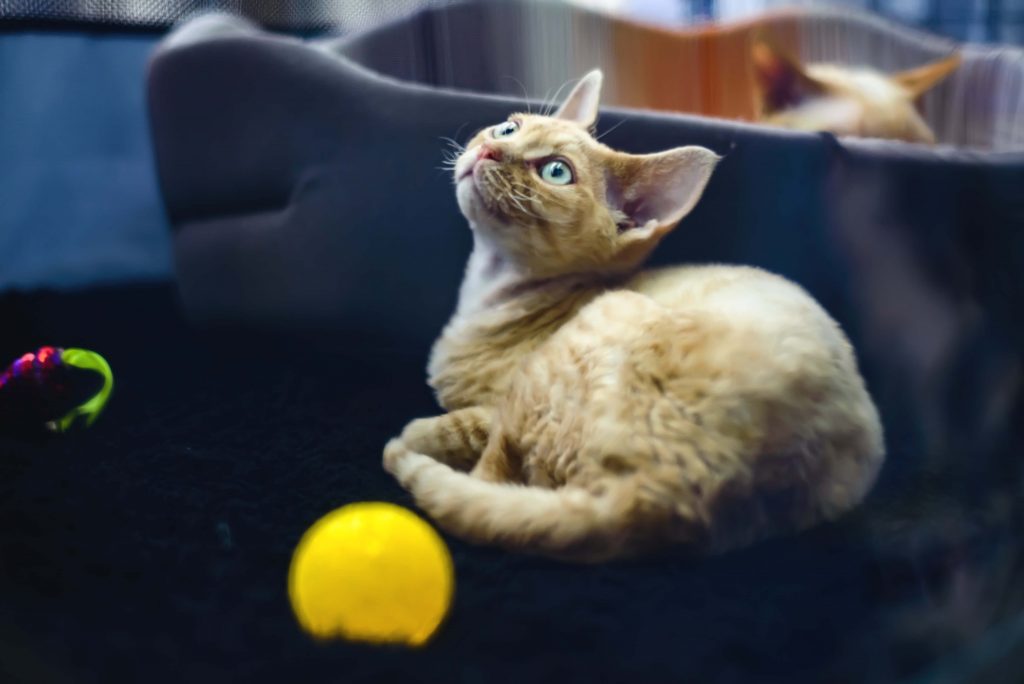
Appearance of the German Rex
The appearance of the German Rex is reminiscent of the European Shorthair. Both cat breeds are of medium size and rather stocky build. The German Rex is a strong, muscular cat with a round head and a broad forehead, pronounced cheeks and large round eyes. It strolls through its territory on medium-long legs. The German Rex is not a graceful, Oriental-looking cat like its Cornish Rex and Devon Rex counterparts. It has a robust and grounded appearance.
Size of the German Rex
How big do German Rex cats get? The German Rex is considered to be an adult at roughly 9 to 12 months, when it has reached its final size. With a height of 30 to 35 cm – as measured from the front paws to the highest point of the shoulder blades – German Rex cats belong to the group of medium-sized cats. The males are often a few centimetres taller than the females.
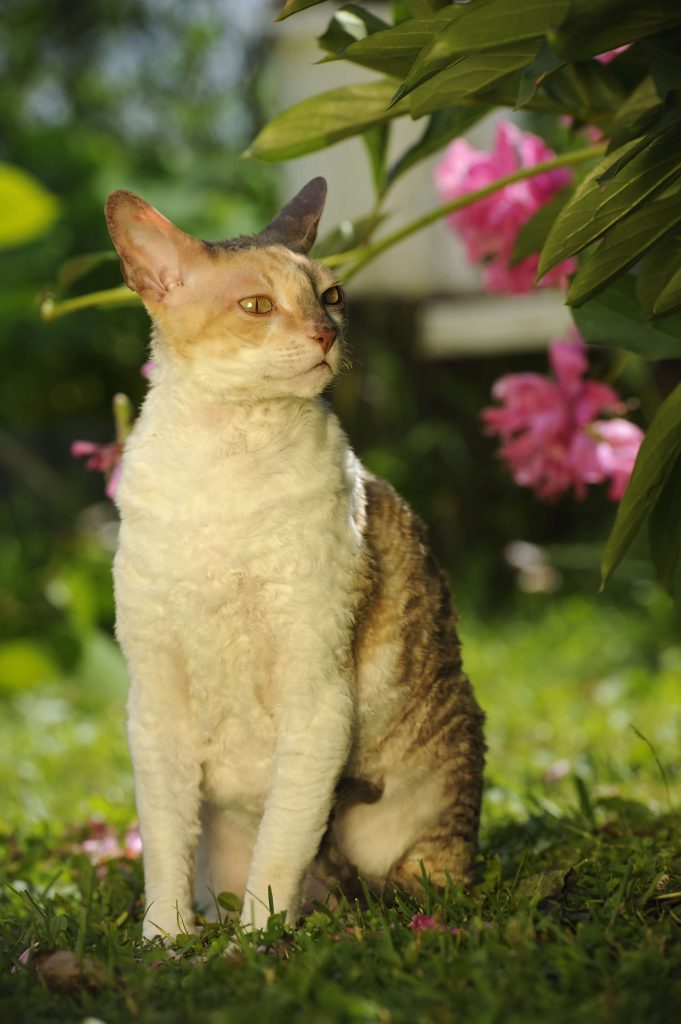
Weight of the German Rex
How much do German Rex cats weigh? According to the GRX standards (WCF, FIFe, CFA, TICA, LOOF), which apply to the German Rex, the females of this breed should weigh about 3 to 4 kg. The males of this breed are somewhat more compact in terms of physique and bone mass, which means, unsurprisingly, that they’re heavier. Compared to females, the males of this cat breed weigh on average between 4 kg and 5 kg.
Coat of the German Rex
The short coat of the German Rex is wavy and/or curly. It appears plush, like a stuffed animal, and feels exactly the way it looks, namely silky and soft. This is because the coat of the German Rex contains hardly any longer outer hair, but mainly guard hair. As a result, these cats shed very little, which gives them a reputation for being suitable felines for allergy sufferers. However, as we now know, a cat’s hair is not the real “offender” when it comes to allergies! These hairs only contribute indirectly to allergies. A person’s cat allergy is actually triggered by allergens.
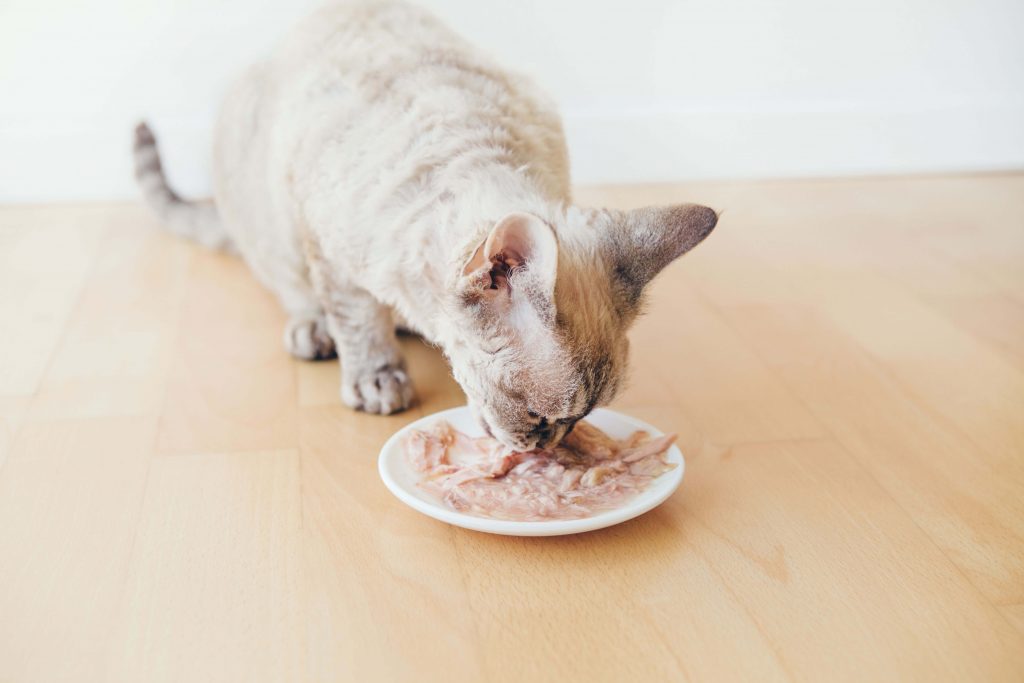
Coat colour of the German Rex
All coat colours are permitted in the German Rex, including Raven black and pure white iterations. The most typical colours are the same found in European Shorthair cats, and the coat may also be speckled with white patches of any size. In the case of the German Rex, the basic coat colour plays a less important than the structure and the quality of the cat’s curls.
Coat length of the German Rex
German Rex cats have a short coat. The fine, evenly waved coat of these cats consists almost entirely of a woolly undercoat. An outer coat, which provides protection against heat and cold, among other things, is more or less absent here. The texture of the soft woolly undercoat can vary from downy to curly.
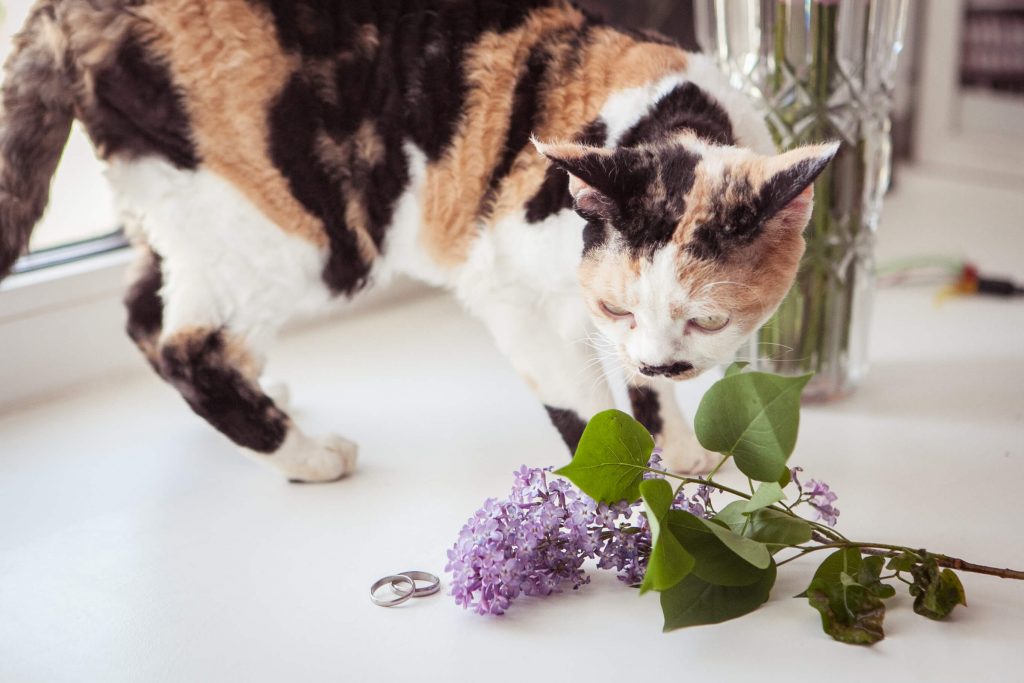
Coat pattern of the German Rex
All patterns and shades are permissible in the German Rex. The breed standard doesn’t limit the number of varieties in any way! This means that the German Rex can have a multitude of different coat colours and patterns. One of the top characteristics of the German Rex is its velvety, crinkled coat, and this feature is often a special focus at shows and in breeding, where it is valued highly by experts.
Eyes of the German Rex
The German Rex has bright, beautiful eyes that are wide-set and highly expressive. All colours are permitted in these cats, however their eye colour should match the basic colour of their coat, so that they leave a harmonious impression. All eye colours can occur, whether aquamarine blue, amber, yellow or green. There is no standardised appearance in this cat breed. Every German Rex is unique and has its own individual eye look.
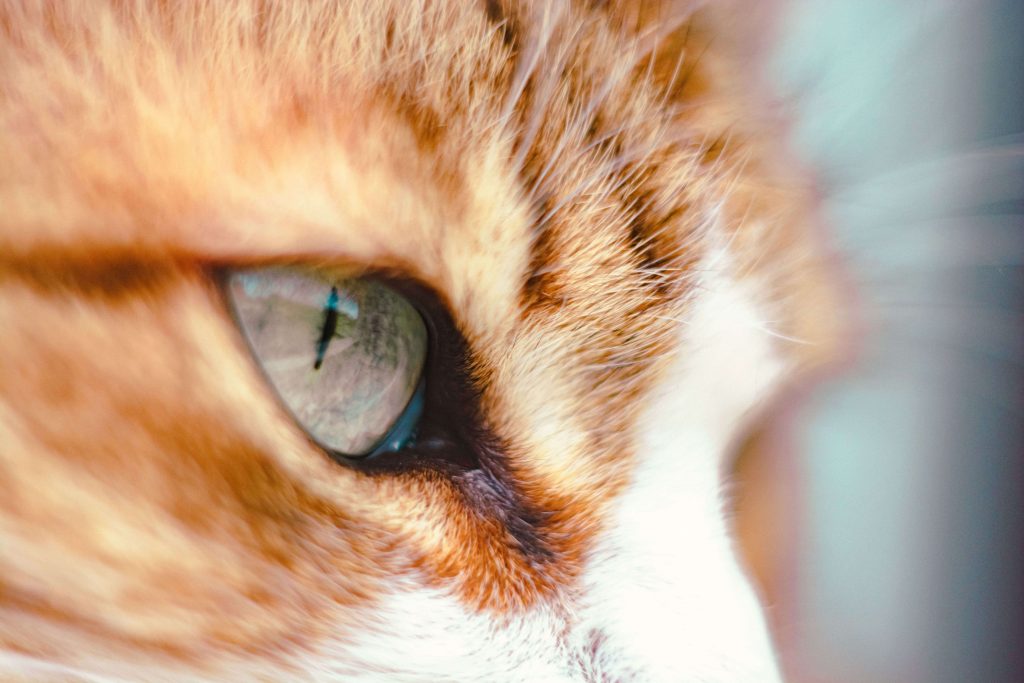
Special features of the German Rex
One of the special features of the German Rex is that it’s the oldest of the known Rex cat breeds. Furthermore, it’s the only Rex of German origin. The wavy coat of the German Rex is not the result of breeding. It is a spontaneous gene mutation that arose naturally. Cats with the Rex gene can be found in many different places, but there’s only one Rex of this type in Germany! It’s a recessive trait in the Cornish Rex, Devon Rex and German Rex. In the Selkirk Rex, the wavy hair dominates. It prevails over non-crimped hair.
Key attributes of the German Rex
The German Rex has physical characteristics that distinguish it from other Rex cats. First of all, it’s more muscular and powerfully built than its Rex counterparts. Second, all of their shapes are rounded, including their head and paws. Their legs are somewhat shorter, but more robust and sturdy. The ears of the German Rex are smaller and more discreetly shaped than those of its Rex comrades. However, like the Cornish Rex, the German Rex has no top coat.
Character of the German Rex
German Rex cats have a balanced character. These cats are extremely friendly and very loyal souls. They’re also very robust and adaptable. Are there dogs or other cats in your household? No problem! German Rex cats are sociable and charitable when it comes to their housemates. They appreciate the company of their favourite humans, even visitors. And because they’re very resourceful, these kitties are known for carrying out little pranks. All in all, these curly goblins are always up for playing and cuddling.
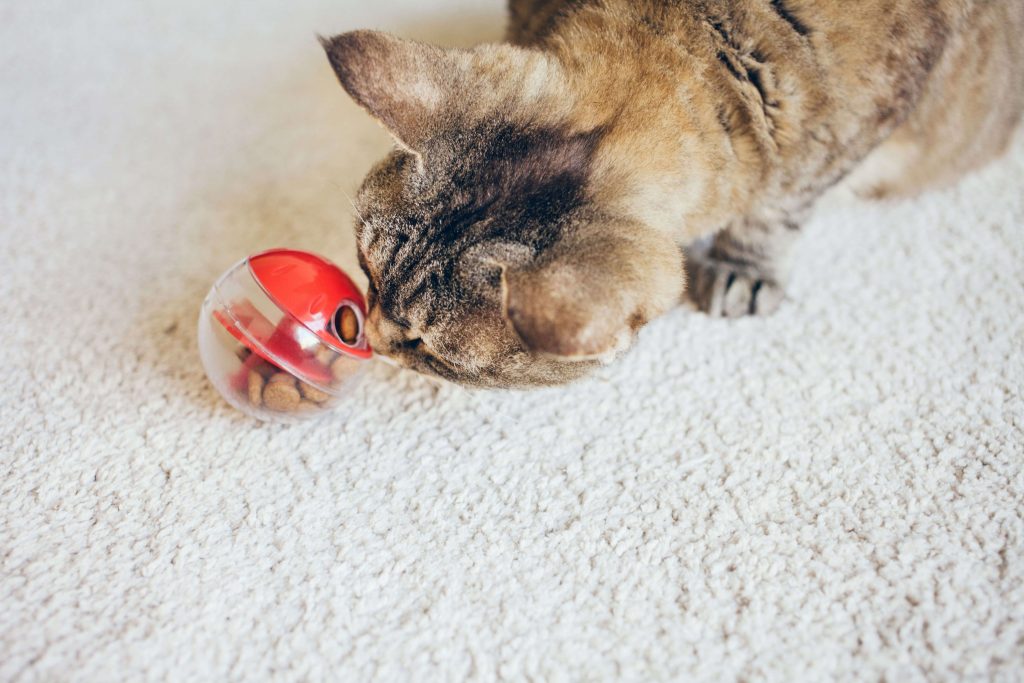
Price of the German Rex
How much does a German Rex cost? The price of a cat of this breed usually runs between €700 and €1,200. Does that sound expensive? Don’t forget that a serious breeder will invest a lot in their cats. In contrast to so-called backyard breeders, serious breeders will take great care to provide both the parents and the kittens with the best in nutrition and upkeep, so that they’ll grow up happy and have long and healthy lives! If you purchase a feline from a serious breeder with a good reputation, the cat will already be de-wormed. And it will usually have already been given its basic vaccinations at the vet.
Breeding of the German Rex
The German Rex is not the product of any special breeding. The wavy, crinkled coat of these felines is entirely the result of Mother Nature’s whim. Wavy-haired cats have always existed without human intervention; however, without targeted breeding, the curly coat remains a rare phenomenon. The breeding of the German Rex was not initially encouraged, which means that these Rex cats were by no means in the limelight at the beginning. It wasn’t until the 1950s that the breeding of the German Rex became more intense. This was the moment when this charming wavy-coated cat started to attract attention and become more and more popular.
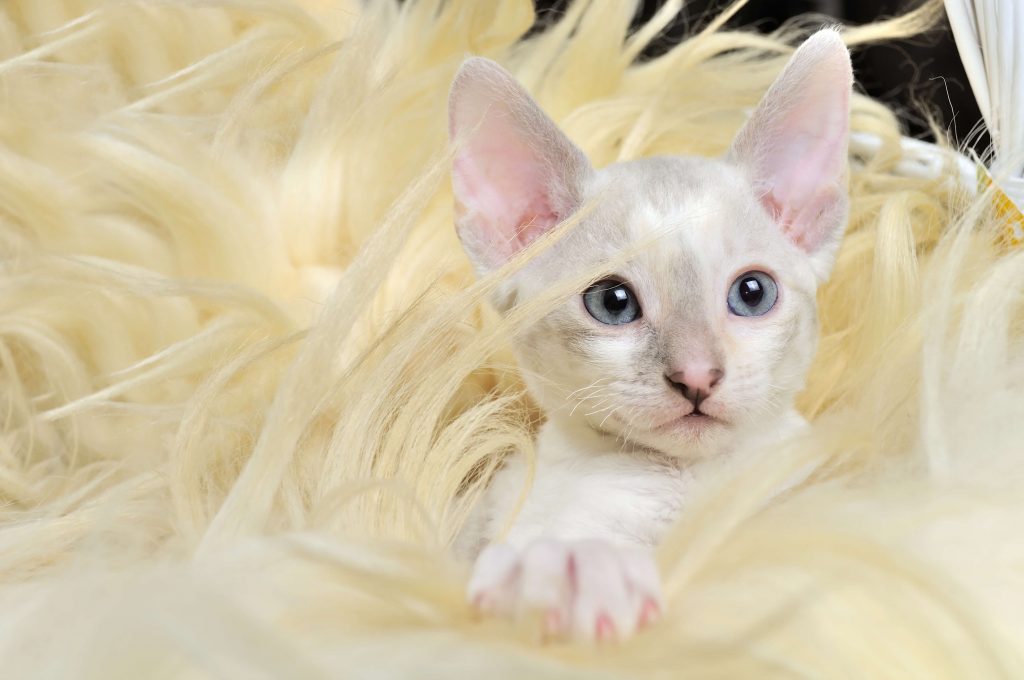
Things to know about keeping and caring for the German Rex
Caring for the coat of the German Rex is not very time-consuming. Much like the Cornish Rex, the German Rex has hardly any top coat, so it’s quite sufficient to groom them once a week with a soft brush. However, one should proceed very gently and with great caution, because “more is better” does not apply to the Rex coat. In fact, the opposite is true! Too much brushing or combing can damage the coat of this cat breed. However, their ears would love it if you gave them regular grooming sessions!
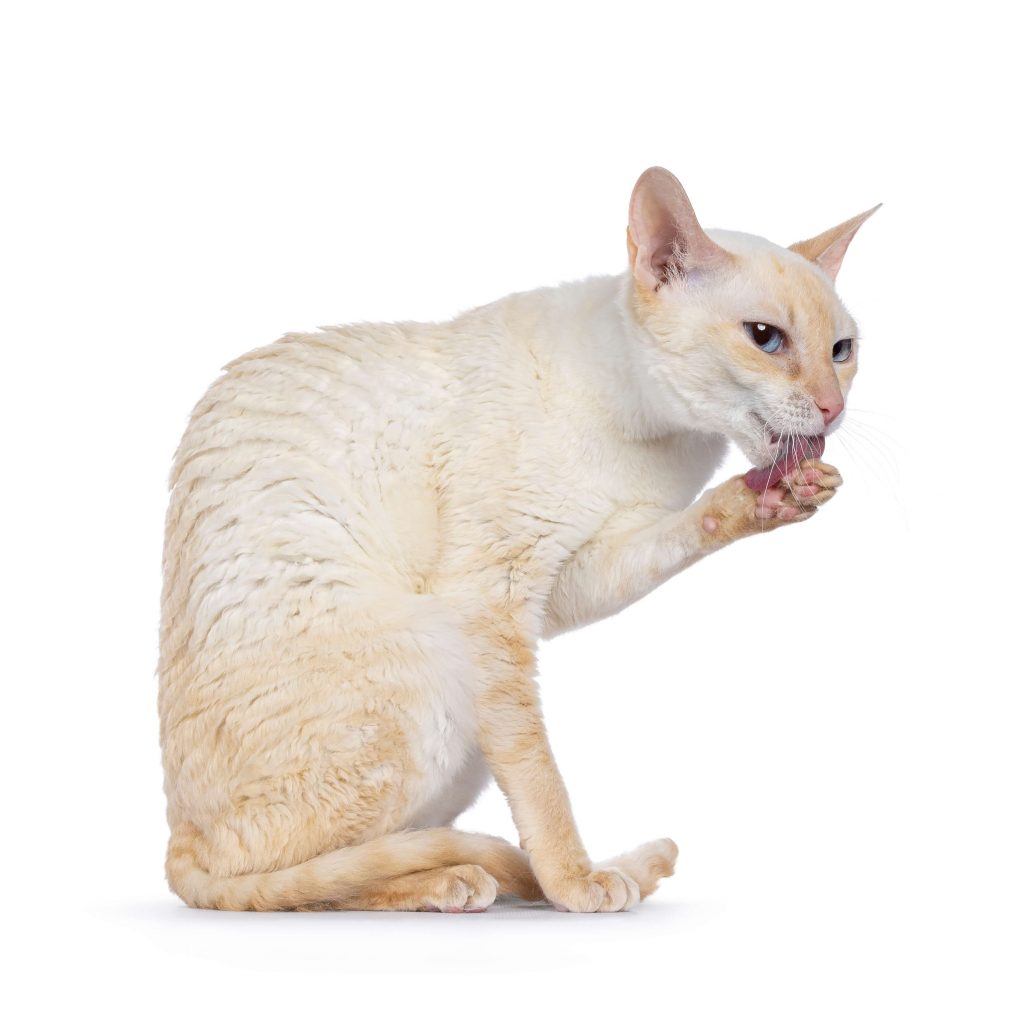
German Rex Kittens
German Rex kittens are already very special at a young age. Although they’re born with curls, they lose them again shortly after birth. Only during their first coat change does their fur become wavy curly again, just like when they were born. In other words, these kittens like to keep things exciting. They’re little bags of wonder on four paws! As far as their coat type is concerned, the suspense is pre-programmed, because it can take up to 24 months before you finally find out what your German Rex will look like.
Typical diseases of the German Rex
There are no diseases known to be specific to German Rex cats so far. While Cornish Rex and Devon Rex cats may occasionally suffer health problems due to patellar dislocation, the more powerfully built German Rex cats rarely suffer from this kind of disease. Otherwise they’re quite robust, but you should avoid keeping them in places where it’s cold and wet. Due to their thin Rex coat, they prefer locations that are cosy warm. They’ll constantly seek out cosy warm places, for example near the heater.
Life expectancy of the German Rex
The German Rex has an average life expectancy of 12 to 15 years. Fifteen cat years are the equivalent of 76 human years, so that’s quite a proud age for a feline. Still, it’s never possible to say in general how long a Rex cat will actually live. Every cat ages, but every cat ages differently. It depends on many different factors. One thing is for sure: Rex cats that are in good physical and mental health will be happy cat buddies for a long time!
